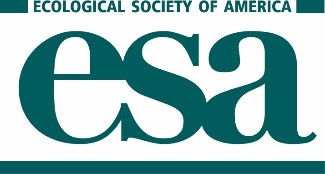Investigating human impacts on stream ecology: locally and nationally
Author(s): Meghan Graham MacLean
University of Massachusetts Amherst
1118 total view(s), 575 download(s)
Description
Overview
In this module, we’ll explore how land cover change impacts streams from around the nation and locally. This module is adapted from a TIEE module published in 2012 by Amelia Nuding1 and Stephanie Hampton1,2 that can be found here. I have subsequently modified it to fit within a Landscape Ecology curriculum and made some modifications to be more inclusive. This module was tested using an online synchronous class setup, so modifications included making the module accessible for online learning and group work.
1 - National Center for Ecological Analysis & Synthesis, University of California, Santa Barbara, Santa Barbara, CA 93101-3351
2 - Corresponding Author: Stephanie Hampton (hampton@nceas.ucsb.edu)
Connection to other modules
This module can be enhanced by combining it with two other modules available online:
- The NEON Data module (my version) - modified to introduce metadata, GIS, and R so that R is familiar to students. The students are also introduced to the National Land Cover Database (NLCD) in the NEON module, which is then revisited in this module. Alternatively, any quick introduction to R will work for this module, since the R markdown script for this module is relatively self-contained and ready for students to run even if they only have a surficial understanding of R.
- The NELF Explorer: Drivers of Landscape Change module - a module that introduces land use and land cover change as well as how modeling future land use decisions can be useful. We use the scenarios presented in the New England Landscape Futures (NELF) project in this module to hypothesize what might happen to stream ecology as a result of future land use change in New England. The NELF module introduces the future scenarios of land use and what the results of the modeling of future land use look like in terms of land cover change. Alternatively, the information contained within the NELF module could be provided to the students without them needing to complete the activity if you would like to use the scenarios in this module without having the students complete the full NELF module prior to this one.
Learning objectives
By the end of the module, students should be able to:
- understand some of the relationships between water quality and land use/land cover
- relate water quality with stream ecology and nutrient pollution and bioindicators
- use R to create simple plots and identify differences in nutrient loading in different EPA regions
- interpret land cover maps and land cover change
Inclusivity for an online teaching platform
This module was created and tested using an online learning platform (using Zoom for synchronous meetings) and created with a few new inclusive pedagogical practices. This module naturally lends itself to setting the stage for having more difficult conversations about how human needs (like food) impact stream ecology, so introducing inclusive practices with this module is very helpful. Earlier in the semester I talked about the value of multiple perspectives when studying landscape change, and I reminded students of the power of multiple perspectives in future planning of land use change for this module. I then assigned students to groups of ~3 to work through the module using the “breakout room” feature on Zoom (though this could be done in in-person classes as well). Creating smaller groups gave the students a hopefully safer and more comfortable environment to begin to talk about the impacts of land use. I popped into each breakout room a couple of times as they worked to check in on the group work and tried to assess if all group members' opinions and perspectives are being valued and respected in the discussion, but without judging their current discussion for accuracy. Then as a full class at the end of the module, we discussed how certain land uses, like industrial farming, have value to humans as food sources, while also causing a decline in stream health - and how that is spatially distributed across the conterminous US. I ended class by telling them we would revisit this concept in the following class period and talk about how to balance land uses: how can we provide food equitably while also trying to improve stream health. It was helpful that we ended the class focusing on the region where we live (we are in Massachusetts), so if you are outside of New England, it may be helpful to add a step talking about your specific EPA region. This can give students a more accessible entry into land use change, since many of them will have observed the mapped land covers in their specific region.
Cite this work
Researchers should cite this work as follows:
- MacLean, M. G. (2020). Investigating human impacts on stream ecology: locally and nationally. ESA Data Access - Inclusive Pedagogy, QUBES Educational Resources. doi:10.25334/QB8W-8B80
